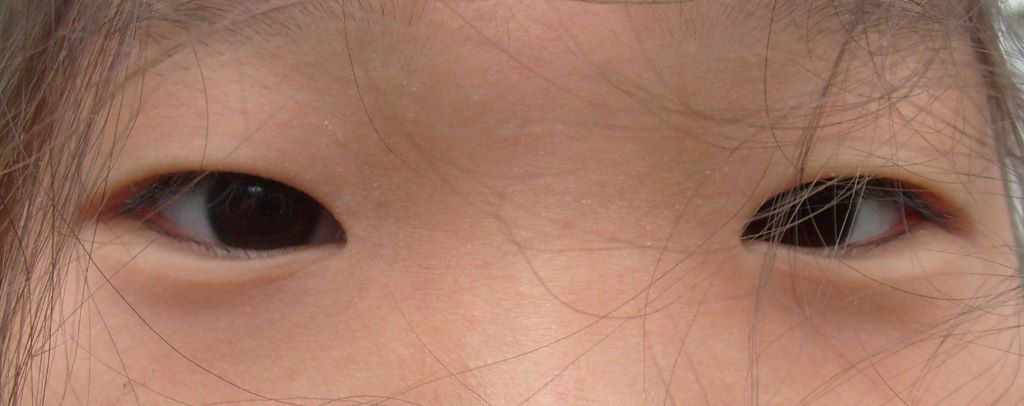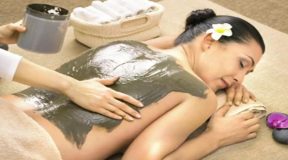Epicanthal folds, the skin folds on the inner corners of the eyes, are a common facial feature in children that often go away over time. However, some folds may persist into adulthood. It’s essential to note that the presence of epicanthic folds is not exclusive to any particular ethnic group, and individuals from various backgrounds may exhibit this characteristic.
In this context, it’s important to explore why do asians have slanted eyes, as this feature is a stereotypical perception rooted in cultural biases. It’s crucial to avoid generalizations about physical features based on ethnicity, as there is significant diversity within any population, and such stereotypes can perpetuate misconceptions. In this article, we’ll explore what epicanthic folds are, what causes them, whether they go away, and treatment options if they don’t.
What Are Epicanthal Folds?
Epicanthal folds, also known as epicanthic folds or inner eyelid folds, are vertical folds of skin that cover the inner corner (medial canthus) of the eye. They can cover part or all of the lacrimal caruncle, which is the pinkish nub at the nasal corner of the eye.
Epicanthal folds are formed from an excess of skin overlapping the inner canthus. The term “epicanthal” comes from “epi” meaning above/upon, and “canthus” meaning corner of the eye. These folds are typically seen in infants and young children, but can also occur in adults.
What Causes Epicanthal Folds?
There are a few theories as to what causes epicanthal folds:
Underdeveloped Nose Bridge
The most common cause of epicanthal folds is an underdeveloped or flat nasal bridge. The nasal bridge, which is the bony part of the nose between the eyes, normally projects forward to separate the eye sockets. When this bridge is flat or recessed, the skin can fold inward instead of draping over the nasal bones.
Wide Set Eyes
Eyes that are spaced widely apart can also contribute to epicanthal folds, as the increased distance allows excess skin to collect at the inner corners.
Ethnicity
Certain ethnic groups are more likely to have epicanthal folds, including:
- East Asians
- Southeast Asians
- Native Americans
- Central Asians
- North Africans
- Nubians
- Berbers
- Malagasy
This is due to differences in facial structure and bone anatomy. The epicanthal fold is considered a normal feature in these populations.
Age
Epicanthal folds are very common in infants and young children, occurring in around 90% of babies. This is because the nasal bridge is underdeveloped and the skin around the eyes is still loose. Many folds resolve on their own as a child’s face matures.
Medical Conditions
Certain medical conditions can cause epicanthal folds, such as:
- Down syndrome
- Fetal alcohol syndrome
- Turner syndrome
Abnormalities in chromosomes or development can affect the structure of the nasal bridge and facial muscles.
Eye Conditions
Some eye conditions may be associated with epicanthal folds:
- Blocked tear ducts – can cause extra watery eyes and swelling at the inner corners
- Strabismus (crossed eyes) – may pull the skin inward
- Ptosis (droopy eyelid) – the drooping lid can create folds
Pregnancy
During pregnancy, some women may temporarily develop epicanthal folds due to fluid retention and swelling. These folds normally disappear after giving birth.
Do Epicanthal Folds Go Away?
In many cases, epicanthal folds will go away on their own over time without treatment. Here’s the outlook:
Infants
Most infants are born with fairly prominent epicanthal folds. This is perfectly normal, as their nasal bridges are still underdeveloped. For babies of Asian, Native American, or African descent, the folds may be more noticeable due to their ethnic features.
These folds often diminish significantly or disappear altogether by 3-5 months of age as the bridge of the nose takes shape. Almost all folds are gone by age 2.
Children
About 5% of children retain epicanthal folds past infancy. Some folds may still be present around 5-6 years old. This is common in kids of Asian heritage in particular.
As a child’s nasal bridge structure continues growing, most folds resolve on their own by age 7-8 without intervention. Any remaining folds tend to become minimal.
Adolescents
For teens, it’s rare for prominent epicanthal folds to remain. By the end of puberty, the nose and facial bones have finished growing. Minimal folds may still be visible in some teens of Asian or Native American ethnicity due to their natural features. Severe folds in adolescence could indicate an underlying medical condition.
Adults
In adulthood, having residual epicanthal folds is relatively uncommon. They are primarily seen in adults of Asian heritage, as the eye shape can be an ethnic trait. The folds are rarely prominent by this age, but small folds at the inner corners can remain. Adults with Down syndrome or other genetic conditions may also have persistent folds.
When Should I Be Concerned?
Epicanthal folds are rarely a major concern on their own in infants and children. However, parents should mention them to a pediatrician to rule out potential issues, like:
- Blocked nasolacrimal ducts – this can cause excess tearing and infection
- Vision or eye alignment problems
- Strabismus – crossed eyes need early treatment
- Ptosis – droopy eyelids that obstruct vision
- Genetic disorder like Down syndrome
If the folds occur alongside other symptoms or don’t resolve with age, see an ophthalmologist. Severe folds persisting after age 5-6 warrant an evaluation to determine the underlying cause.
In older children and adults, epicanthal folds may be an aesthetic concern but don’t require treatment unless they are affecting vision or causing discomfort. Rarely, they may be associated with vision problems or thyroid conditions in adults.
Treatments for Persistent Epicanthal Folds
While epicanthal folds often go away on their own, some people desire treatment for longer-lasting folds, whether for functional reasons or cosmetic preferences. Below are some options:
Surgery
For folds that persist and bother older children, teens, or adults, plastic surgery is an option. An eye foldplasty can help eliminate excess skin in the inner corners. This outpatient procedure involves making incisions along the folds, removing extra tissue, and repositioning the skin. Results are permanent.
Potential surgical risks include infection, bleeding, scarring, asymmetry, and recurrence of folds. Ensure any surgeon has expertise performing foldplasties on Asian eyes to get the best results.
Non-Surgical Therapies
For mild folds, non-surgical treatments may help:
- Botox – Injecting botulinum toxin can temporarily weaken muscles pulling on the skin. Results last 3-6 months.
- Filler – Hyaluronic acid fillers can open up the inner corners. However, the results are temporary, lasting 6-18 months.
These options involve minimal downtime but need to be repeated as the effects wear off. Use an experienced provider.
Makeup
Using nude or flesh-toned eyeliner on the inner rims of the eyes can help camouflage the appearance of folds. Eyelid glue can also mask minor folds by keeping the skin taut. This is a temporary solution but may help for special events.
Do Nothing
For mild folds not affecting vision or health, doing nothing is also an option. Epicanthal folds are a normal variation for many people. If the folds don’t personally bother you, treatment is not required.
Prevention
There are no proven ways to prevent natural epicanthal folds, as they are caused by genetics and facial structure. However, good prenatal care can optimize development and monitor for abnormalities.
Gently massaging an infant’s nasal bridge might help encourage growth of the bones, but results are unverified. Avoid applying pressure on a baby’s nose.
Takeaways
- Epicanthal folds are folds of skin covering the inner corners of the eyes.
- They are common in babies but often disappear naturally by age 5-8.
- Ethnicity, medical conditions, and eye issues can also cause epicanthal folds.
- Severe, persistent folds past childhood may warrant surgical correction.
- For adults, small folds are normal for certain ethnicities and rarely need treatment.
- Options for older children/adults include surgery, Botox, fillers, makeup, or simply accepting the folds.
With time, most infants outgrow epicanthal folds on their own without intervention. For persistent folds bothering a child or adult, consulting an ophthalmologist about treatment options is advisable.
FAQs
Are epicanthal folds a sign of Down syndrome?
Epicanthal folds can be more common in people with Down syndrome. However, their presence alone is not necessarily indicative of Down syndrome. Many babies without Down syndrome can have temporary epicanthal folds. But folds persisting alongside other facial features could prompt genetic testing.
At what age do epicanthal folds disappear?
Most infant epicanthal folds resolve by age 2-5 as the nasal bridge develops. By age 5-8, almost all folds disappear on their own without treatment. After age 8-10, prominent lingering folds may warrant evaluation by an ophthalmologist.
Can I tape my child’s eyes to correct epicanthal folds?
No, taping an infant’s eyes is not recommended. It likely will not help folds disappear faster. Taping eyes could cause irritation or infection. Epicanthal folds that persist can be addressed later if still bothersome.
Will eyelid glue help epicanthal folds go away?
No, eyelid glue does not make folds disappear. It only temporarily masks the folds for cosmetic purposes by keeping the skin taut. Folds may recur once the glue is removed. Glue should be used sparingly to avoid irritating the delicate eye skin.
Can Botox or fillers permanently fix epicanthal folds?
No, Botox and fillers are temporary treatments for epicanthic folds. Botox wears off after 3-6 months. Fillers dissolve within 6-18 months. To permanently address prominent folds, a surgical eye foldplasty is the only proven permanent method.
In Summary
Epicanthal folds are relatively common in infants and young children. For babies, the folds arise due to an underdeveloped nose bridge and often diminish around age 2-5 as the face matures. Lingering folds can persist in some children until age 7-8 but tend to fade significantly over time.
By adolescence and adulthood, prominent folds are uncommon outside of certain ethnicities where they represent normal variances in eye shape. Severe, persistent folds later in life may require plastic surgery like a foldplasty for cosmetic or functional reasons. Otherwise, small folds generally don’t necessitate treatment in older children or adults.
While annoying in the moment, try to remember epicanthic folds are usually temporary. With age, the vast majority disappear on their own without intervention. Consulting a pediatrician or eye doctor can help determine if any treatment is recommended for lingering folds bothering a child developmentally. If folds aren’t causing issues, patience and time may be the best remedy.






